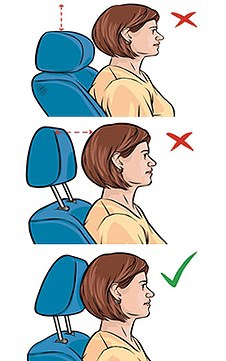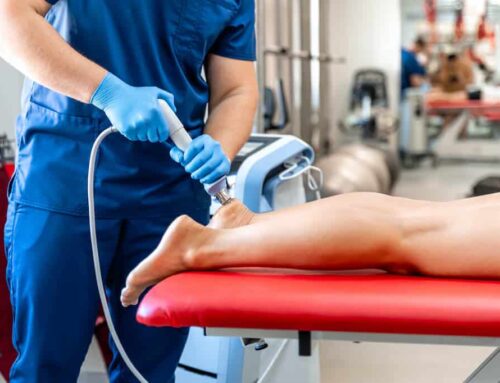Welcome to the 5th and final part of our whiplash series! We have already discussed the anatomy, what whiplash is, and what to do if you have just been injured, medical procedures, and what to expect with physical therapy, and chronic whiplash. Now we will discuss how to set up your car so that in the case that you are rear-ended, you have less risk of whiplash from a car accident.
What is the optimal car set up to best combat whiplash.
To understand this section, it is necessary to understand at which point the neck becomes injured. Most people assume, due to the name, that it is when your head whips back and your chin goes up that the injury occurs. When an impact first occurs, your body is in contact with the car seat. This propels your body forward, leaving your head behind. Several studies point to this being the time where the structural and soft tissues are most challenged and loaded, and therefore the most likely point of injury.1
To combat this, car companies have been making it so that you can now move your headrest forward. If you remember correctly, they used to only have an up and down function. The idea is to move the headrest to one of these forward positions, so that in the case of an impact, your head has less distance to travel before impacting the headrest, therefore reducing your chances of injury. You must also take care to ensure that your head does not come into contact with the headrest at a point that is too low or too high as this may not be as effective in reducing injury.

http://head2toeclinic.com/
Your risk factor of getting whiplash increases with age. As the height of your disks decrease, your ligaments become looser and your neck is already less stable without being hit from behind. Your risk may also be increased if you are female due to the more slender neck being less able to tolerate whiplash forces. It is particularly important for these two groups of people to ensure that they have the optimal setup when in their vehicle. It may also be worth considering performing neck strengthening exercises. It has been found that doing exercises that enhance the strength and size of your neck musculature can reduce risk of whiplash injury. Not to fear, you will not end up looking like this…

http://media.ignimgs.com/
…but we can dispel the myth about lifting and muscle bulk in another blog.
This concludes part 5 of 5 of our whiplash series. We hope that we have been able to provide you a better understanding of your injury and how you can play an active role in its’ management. As always, please be sure to consult your physical therapist before taking any action. Check out our blog on direct access to see if you can access your physical therapist without waiting to get a prescription from your primary care provider.
Stemper B, Corner B. Whiplash-Associated Disorders: Occupant Kinematics and Neck Morphology.



